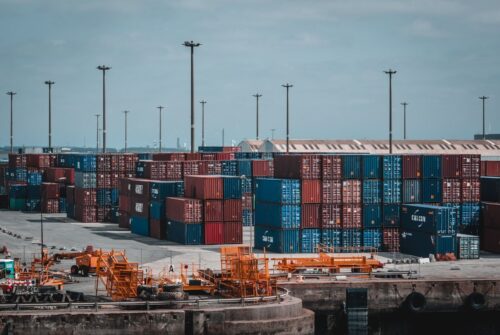Forward Integration: Strategies, Advantages, And Risks

Forward integration is a key strategy for businesses to strengthen their market position and control over their supply chain. This approach involves companies taking charge of distribution or supply activities further down the value chain.
This article examines the various strategies, benefits, and risks of forward integration, offering insights for businesses to effectively implement this approach for better market control and sustainable growth.
Understanding Forward Integration
Forward integration is an existing business strategy that involves owning and controlling activities ahead in the value chain, allowing companies to distribute or supply their products and sell directly. It is a form of downstream vertical integration strategy where companies advance along the company’s supply chain.
Understanding forward integration is crucial for businesses looking to increase control over suppliers, manufacturers, or distributors. By implementing an example of forward integration, companies can optimize economies of scope, target better cost structures, and increase market share and profitability.
Applying Forward Integration Strategies
Implementing forward integration strategies allows companies to assert greater control over their supply chain and streamline direct product distribution. Businesses gain a competitive advantage by optimizing their value chain and enhancing the distribution network, notably improving their after-sales services.
Best Opportunities For Applying Forward Integration
Forward integration offers the most significant opportunities in industries where direct customer engagement and control over distribution channels are crucial. Key sectors include:
- Retail and Consumer Goods: Like Nike and Apple with direct-to-consumer sales and retail stores.
- Entertainment and Media: Exampled by Disney+ for direct content streaming.
- Food and Beverage: McDonald’s improving customer experience through technology acquisition.
- E-commerce and Logistics: Amazon’s Amazon Prime for optimized delivery.
- Mineral Extraction and Energy: Notable in companies like Esso for control over resource distribution.
These industries benefit from increased market share, enhanced customer interaction, and competitive advantages through forward integration.
Differences Between Forward Integration And Backward And Vertical Integration
Important factors emerge when analyzing the distinctions between forward, backward, and vertical integration. In forward integration, the primary focus is on “downstream process control” and “direct product distribution,” where companies take charge of the latter stages of the supply chain to reach consumers directly.
Backward integration, conversely, is characterized by “upstream activity management” and “raw material supply control,” where businesses aim to oversee the initial stages of their supply chain, often involving raw material procurement.
Vertical integration represents a blend of both, characterized by “comprehensive supply chain management,” where a company exercises control over the upstream and downstream processes. This integrated approach enables businesses to manage the entire lifecycle of their products, from raw material acquisition to final distribution.
Key Advantages Of Forward Integration Strategy
As we shift our focus to the key advantages of the forward integration strategy, it becomes apparent that this approach offers significant benefits for companies looking to enhance control over the value chain and optimize their market power. Some of the competitive advantages of a forward integration strategy include the:
- Enhanced control over suppliers, manufacturers, distributors, and retail outlets
- Optimization of economies of scope and cost structures
- Increased industry market share and profitability
- Direct selling to customers, enabled by the internet
- Access to wider control over the value chain
Key Risk Of Forward Integration Strategy
While forward integration generally offers numerous advantages, such as increased control over the value chain and better cost structures, it also presents certain risks that should be considered. These key risks include:
- Increased financial investment and resource allocation.
- Failure to effectively manage and integrate acquired businesses.
- Potential customer resistance or backlash.
- Limited flexibility and dependence on internal capabilities.
- Difficulty in adapting to market changes and technological advancements.
Careful evaluation and consideration of these risks are essential to mitigate potential drawbacks of implementing a forward integration strategy.
Third-Party Logistics And Forward Integration Solutions

Third-party logistics (3PL) companies use forward integration by developing or acquiring capabilities in distribution and fulfillment, such as establishing their own transportation networks or warehousing solutions. This enables them to control more of the supply chain, offering end-to-end services directly to their clients.
Pros:
- Greater control over supply chain processes
- Enhanced efficiency and cost savings
- Direct engagement with end customers
Cons:
- Requires significant capital investment
- This can lead to complexities in operations and management
- Potential challenges in adapting to new business models and technologies
This approach allows 3PLs to compete more effectively in the fast-paced logistics sector, especially in e-commerce, by providing comprehensive services that span from warehousing to final delivery.
Industry Examples Of Forward Integration: Success And Failures
Forward integration has exhibited a mix of successes and challenges across various industries. Notable successes include:
- Nike: The company’s shift to Direct-to-Consumer sales since 2011 allowed it to bypass traditional retail channels, selling products directly to consumers.
- The Walt Disney Company: The launch of Disney+ in 2019 enabled direct streaming of on-demand videos to consumers.
- Apple: Opening its retail stores in 2001, Apple took greater control of distribution and customer experience.
- McDonald’s: The acquisition of Dynamic Yield in 2019 aimed to improve the digital customer experience.
- Amazon Prime: Introduced in 2005, this service optimized Amazon’s delivery value chain, offering faster delivery to customers.
However, some forward integration also comes with its set of challenges and potential pitfalls:
- Bureaucratic complexities: The mergers or acquisitions related to forward integration can lead to organizational inefficiencies.
- Challenges in realizing synergies: Ineffectively managed integration can fail to harness the potential benefits of merged entities.
- High costs: The substantial financial requirement for forward integration can outweigh the benefits if not properly managed.
- Lack of focus on core business: Diversifying too far from core operations can decrease efficiency and focus.
These examples illustrate that while forward integration offers significant benefits, such as increased control over distribution channels and market share, it requires careful strategic planning and resource allocation to mitigate potential downsides.
FAQs
Here are the FAQs about Forward Integration: Strategies, Advantages, and Risks:
What Is A Forward Integration Example?
A clothing manufacturer opening its stores for direct sales exemplifies forward integration, bypassing intermediaries for better market positioning and brand control.
What Is Forward And Backward Integration?
Forward integration involves controlling downstream activities to sell products directly, while backward integration means taking over upstream suppliers to streamline production.
What Is An Example Of A Forward Integration Brand?
Apple exemplifies forward integration by designing, manufacturing, and selling its products in its stores, enhancing control over distribution and customer experience.
What Is The Difference Between Upstream And Forward Integration?
Upstream integration involves acquiring suppliers to control raw materials, while forward integration means controlling distribution and sales, each with distinct benefits and investment needs.
Understanding Forward Integration Summary
Forward integration is a strategic approach that allows companies to gain more control over their value chain and increase their market power. By owning and controlling activities ahead in the value chain, companies can optimize economies of scope, target better cost structures, and directly distribute or supply their products.
Forward integration can be a valuable strategy for businesses seeking growth and market positioning. Explore resources on Inbound Logistics for information about warehouse processes and related topics.
